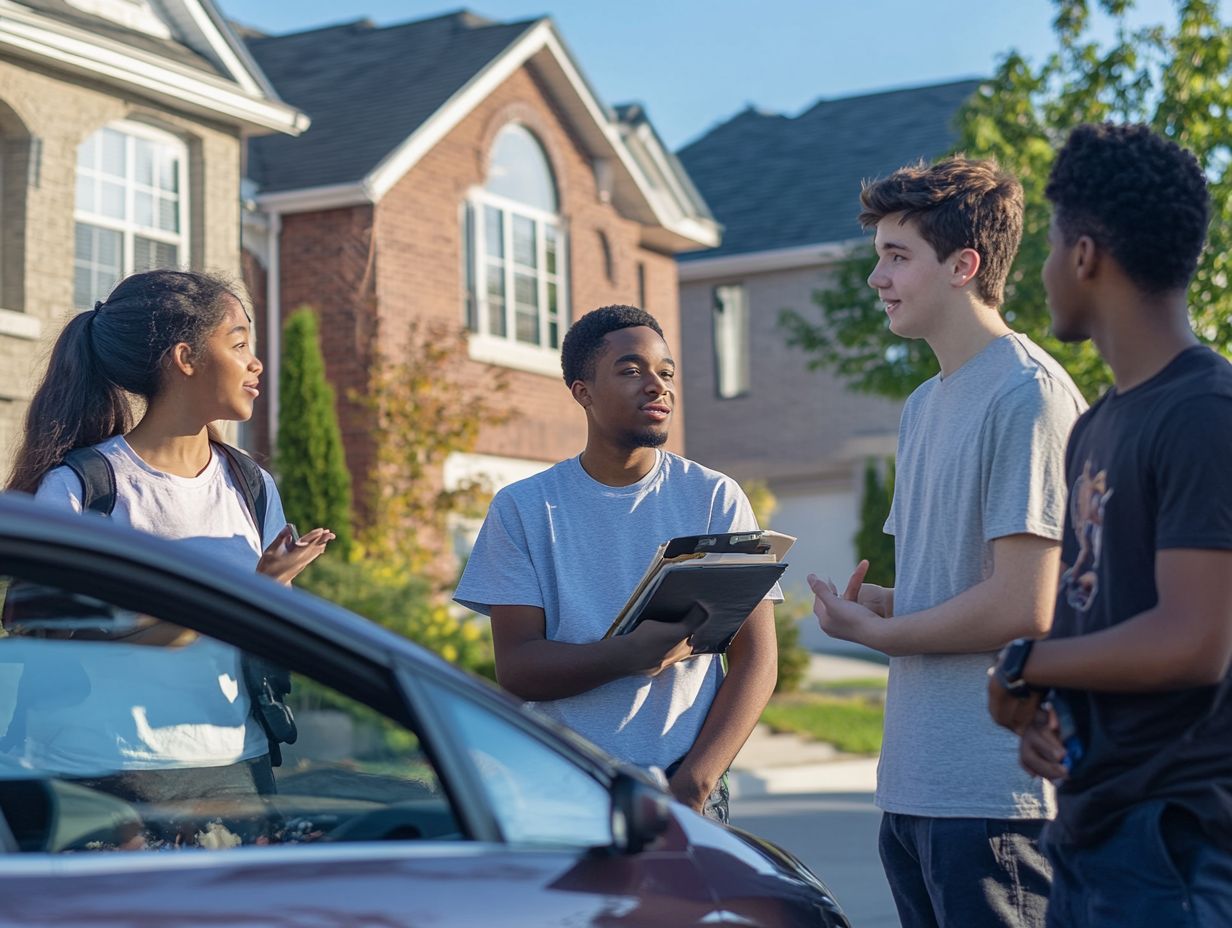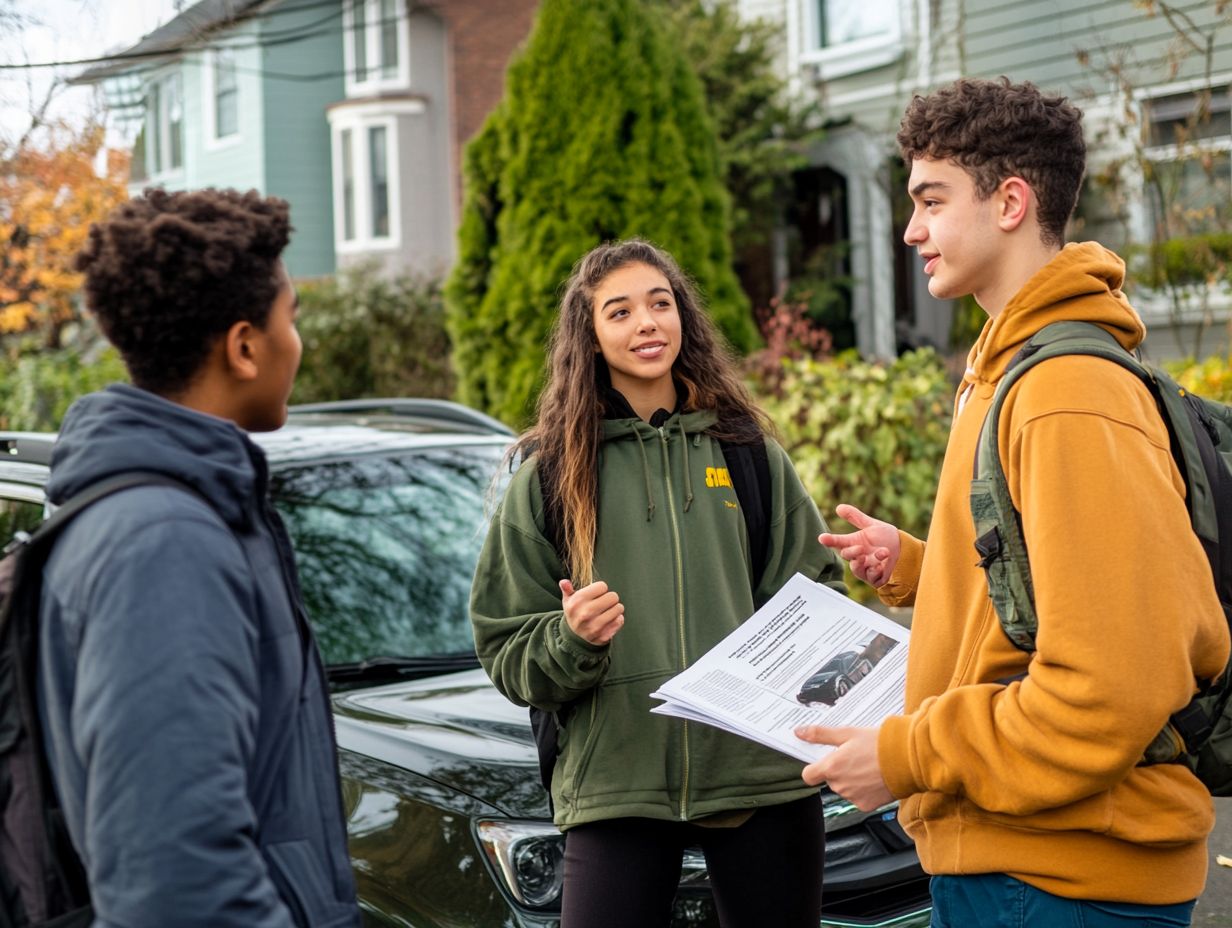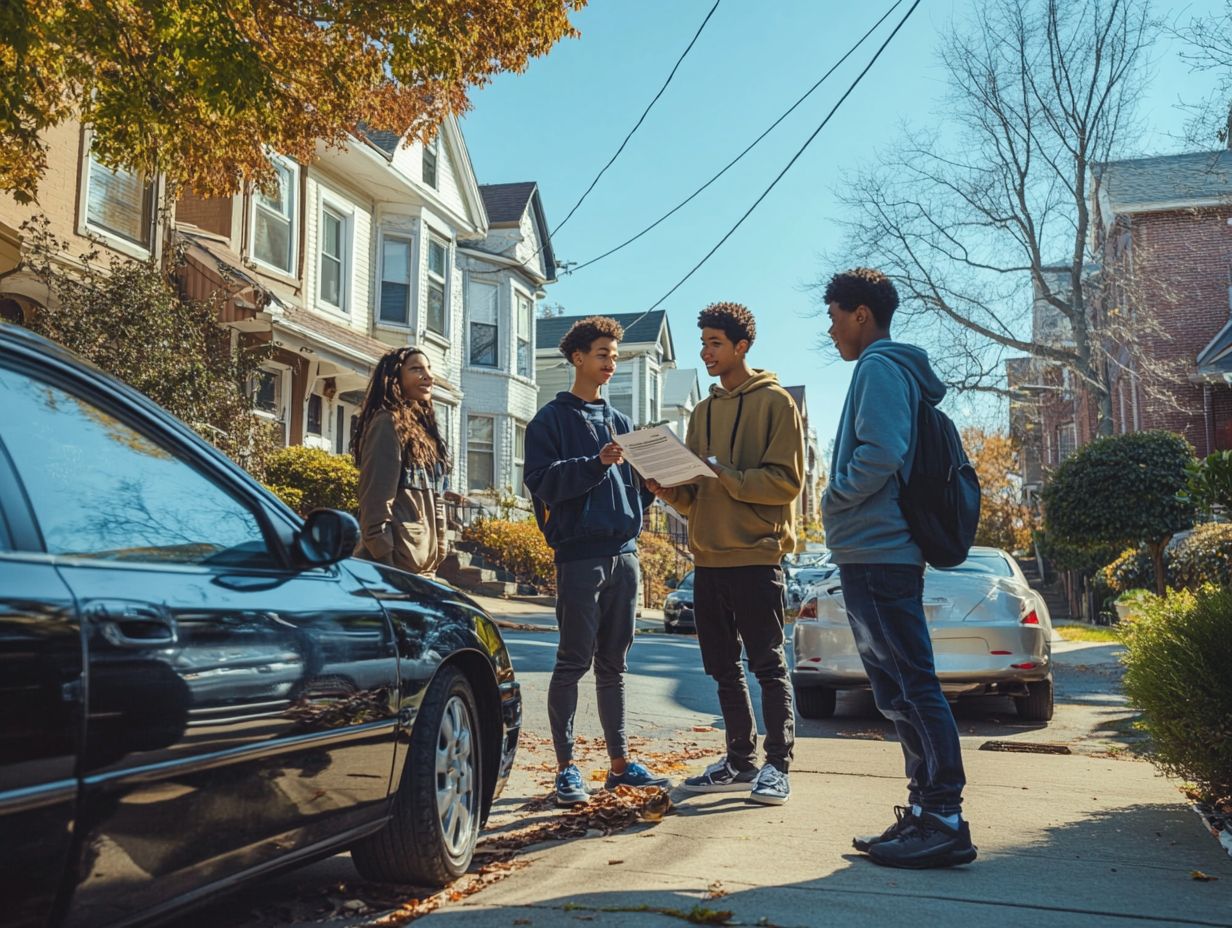What Should You Know About Teen Drivers?
Teen driving accidents pose a significant concern for parents, educators, and communities alike. As young drivers venture onto the road, their inexperience combined with distractions and peer pressure frequently culminates in dangerous situations.
This article delves into the primary factors contributing to these accidents and presents practical strategies to ensure the safety of teen drivers. From fostering parental involvement to emphasizing formal education, various approaches can be considered.
It also examines the effectiveness of Graduated Driver Licensing laws, offering valuable resources tailored for both teens and their parents.
Continue reading to discover insights that could make a meaningful difference in saving lives.
Contents
- Key Takeaways:
- Factors that Contribute to Teen Driving Accidents
- How to Keep Teen Drivers Safe
- Graduated Driver Licensing (GDL) Laws
- Resources for Teen Drivers and Parents
- Frequently Asked Questions
- What Should You Know About Teen Drivers?
- What is the leading cause of death for teens?
- Why are teen drivers more at risk on the road?
- What can parents do to help their teen drivers?
- Are there any laws specifically for teen drivers?
- What Should I Do If I’m Involved in a Car Crash?
- How Can I Stay Safe on the Road as a Teen Driver?
Key Takeaways:

- Teen driving accidents are a serious problem, with statistics showing that they are the leading cause of death for teenagers.
- Inexperience, distracted driving, and peer pressure are common factors that contribute to teen driving accidents.
- To keep teen drivers safe, parents should be actively involved in setting rules and implementing driver education programs.
Statistics on Teen Driving Accidents
Statistics reveal some unsettling trends in teen driving accidents, showcasing just how vulnerable this demographic can be on the road. According to the National Highway Traffic Safety Administration, motor vehicle crashes are the leading cause of death among teens, underscoring the critical need for enhanced safety measures for young drivers.
The Centers for Disease Control and Prevention stresses that being aware of these statistics can enable you to make informed choices about vehicle safety features and educational programs for your new drivers.
Recent studies indicate that teen drivers aged 16 to 19 are three times more likely to be involved in fatal crashes compared to older drivers. Inexperience, distracted driving, and speeding are significant contributors to these alarming statistics.
Interestingly, demographic data shows that male teen drivers are involved in a higher percentage of these incidents than their female counterparts. A lack of structured driving practice, which is essential for cultivating safe driving habits, is a pressing concern.
Stay informed and get involved. You can help reduce these risks and promote safe driving behaviors in your teens.
Factors that Contribute to Teen Driving Accidents
Several critical factors contribute to the alarming rate of teen driving accidents, significantly hindering efforts to reduce crash risks. The inexperience of teen drivers coupled with distractions like cell phones creates a perilous environment on the road.
Peer pressure significantly influences teens. It often leads them to engage in risky behaviors that make driving unsafe.
Inexperience and Distracted Driving
Inexperience plays a significant role in distracted driving among teen drivers, often leading to accidents that could easily be avoided. As a young driver, you might find it challenging to maintain safe driving habits, particularly when distractions like cell phones or rowdy passengers come into play.
A staggering 58% of crashes with young drivers occur due to distractions. This highlights the critical need for awareness and education. You may not fully grasp the immense responsibility that comes with driving, which makes you more prone to making errors.
Research shows that simply receiving safe driving education isn t enough; getting practical experience and guidance from seasoned drivers can be invaluable.
You can make a difference by setting phone-free times and encouraging the use of hands-free devices. Understanding the importance of avoiding multitasking will help you develop better focus on the road, ultimately enhancing your safety and that of everyone around you.
Let’s work together to ensure our teens drive safely and confidently.
Influence of Peer Pressure
Peer pressure significantly impacts teen drivers. It often leads them toward risky behaviors that compromise their safety. This social influence can result in reckless driving habits, such as driving under the influence and failing to maintain a safe following distance.
The desire to fit in with friends can overshadow common sense, pushing teens to engage in actions like speeding or distracted driving. For instance, a teen might feel pressured to impress peers by taking sharp curves too quickly or skipping the seatbelt because their friends have opted out.
Parents play a crucial role in countering these pressures. By fostering open communication and setting clear expectations regarding driving rules, they can help their teens make smarter choices behind the wheel.
Encouraging participation in programs focused on safe driving can further reinforce responsible habits, leading to a safer driving experience.
How to Keep Teen Drivers Safe

Keeping teen drivers safe requires a comprehensive strategy. This includes parental involvement, clear rules, and vigilant monitoring of driving behavior.
By engaging with your teen, you can promote safe driving habits. Encourage them to participate in defensive driving courses, which provide valuable education on the road.
Parental Involvement and Setting Rules
Parental involvement is vital for ensuring the safety of teen drivers. Effective rules guide safe driving practices. By implementing driving contracts and monitoring driving behavior, you foster accountability and enhance safety awareness.
Engaging in open dialogues about driving responsibilities creates a space where your teen feels comfortable sharing their experiences. Establishing specific driving rules like limitations on night driving or restrictions on passengers can further improve their safety.
Creating a driving contract that outlines expectations and consequences for risky behavior sets clear boundaries. This helps your teen take ownership of their driving habits, builds trust, and highlights the importance of safe driving, ultimately reducing the risk of accidents.
Driver Education Programs
Driver education programs equip teens with the skills necessary for safe driving. Focusing on defensive driving courses and crash avoidance technology enhances their ability to make safe decisions.
Many programs include hands-on experience with state-of-the-art simulators. This allows teens to engage with real-world scenarios without risks. They learn vehicle operation fundamentals and how to anticipate potential hazards.
These programs also cover the latest vehicle safety innovations. Teens will learn to use assistive technologies like lane departure warnings which alert them when they drift out of their lane and automated emergency braking systems, which help prevent collisions. With comprehensive instruction and an emphasis on proactive driving strategies, these educational initiatives prepare teens for a lifetime of safe driving.
Graduated Driver Licensing (GDL) Laws
Graduated Driver Licensing (GDL) laws have been introduced in many states to minimize crash risks for teen drivers. These laws establish a tiered licensing system, providing a structured learning pathway that enhances driving privileges as they gain experience behind the wheel.
Overview and Effectiveness
The effectiveness of Graduated Driver Licensing (GDL) laws, or Graduated Driver Licensing laws, is evident in the impressive reductions in crash rates among teen drivers. By implementing restrictions like nighttime driving limits and passenger caps, these laws are a vital tool for improving safety.
Research shows that states with robust GDL programs experience reductions of up to 30% in fatal crashes involving drivers aged 16 to 19. These regulations minimize potential distractions and promote responsible driving habits.
Studies indicate that teens under GDL laws are more likely to engage in safer driving behaviors, such as reduced risk-taking and enhanced decision-making skills. These laws create a culture of accountability, encouraging parents and guardians to actively participate in the driving education process. This involvement ultimately leads to fewer risky behaviors.
Such findings highlight the significant impact GDL laws have in shaping safer drivers.
Resources for Teen Drivers and Parents

Explore the exciting resources available to support you and your teenage driver, all aimed at promoting safer driving habits and enriching educational opportunities. From innovative driving apps that monitor behavior to detailed accident reporting guidelines, these tools cultivate a culture of safety for new drivers.
Embracing these resources can enable both you and your teen to navigate the roads with confidence and caution. Don’t wait! Utilize these tools now to ensure your teen’s safety.
Useful Tools and Programs
Useful tools and programs are essential for enhancing the safety and education of teen drivers. From driving apps that monitor behavior to comprehensive new driver education courses, these resources equip you with the knowledge and skills necessary to make informed decisions behind the wheel.
Leverage applications like ‘Drive Safe’ or ‘Teen Driving’ to gain insights into your teen’s driving habits, including speed and braking patterns. These platforms often feature feedback mechanisms that promote safer driving techniques, fostering a sense of awareness and responsibility in young motorists.
Programs such as the ‘National Safety Council’s Teen Driver Course’ offer structured learning experiences, covering vital topics like defensive driving and accident prevention.
By integrating these crucial tools into their learning journey, new drivers can build confidence while ensuring their safety and the safety of others on the road.
Frequently Asked Questions
What Should You Know About Teen Drivers?
Teen drivers are individuals between the ages of 16 to 19 who have a driver’s license and are legally allowed to operate a motor vehicle. Here are six important things you should know about teen drivers:
What is the leading cause of death for teens?
Motor vehicle crashes are the leading cause of death for teenagers in the United States. In fact, teens are three times more likely to be involved in a fatal crash compared to adult drivers.
Why are teen drivers more at risk on the road?

Teen drivers lack experience and are more likely to engage in risky behaviors such as speeding, distracted driving, and not wearing seatbelts. These factors contribute to the increased risk of crashes among teenage drivers.
What can parents do to help their teen drivers?
Parents play a crucial role in educating and supervising their teen drivers. It is important for parents to set rules and restrictions, provide plenty of practice driving opportunities, and serve as positive role models for safe driving behaviors.
Are there any laws specifically for teen drivers?
Yes, most states have graduated driver’s license (GDL) laws in place for teen drivers. These laws gradually introduce teens to driving privileges and restrictions, helping them gain experience and develop safe driving habits before obtaining full driving privileges.
What Should I Do If I’m Involved in a Car Crash?
Stay calm if you’re in a car crash. Call 911 if anyone is hurt and exchange details with the other driver.
Don t forget to report the crash to your insurance company. Follow your state’s laws to ensure you’re compliant.
How Can I Stay Safe on the Road as a Teen Driver?
Follow traffic laws and avoid distractions while driving. Always wear your seatbelt; it saves lives!
Practice safe driving by keeping a safe distance between your car and the one ahead. This means maintaining space to avoid accidents. Stay alert and focused while driving.






